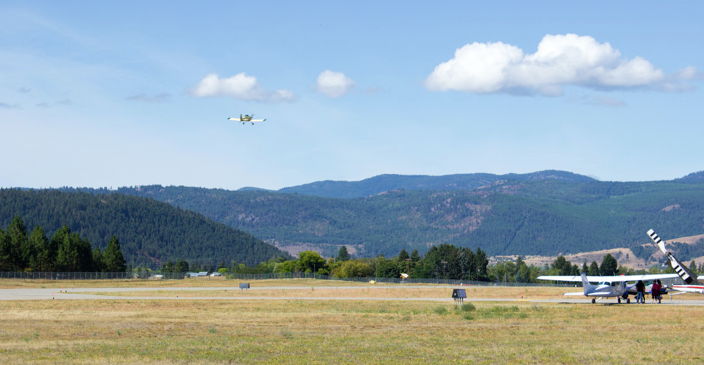Economic development and fire suppression impetus for airport upgrades
The city is hoping to land a high-flying provincial grant and improve fire suppression at the Grand Forks Airport, as well as help support development in that end of the city.
City council endorsed a staff move to pursue a grant application — with an estimated capital cost upgrade worth $2.48 million — under the 2017 Gas Tax Strategic Priorities Fund to assist in the construction of water system upgrades to improve the fire flow availability of the water system at the Grand Forks Airport.
Water is supplied to the airport and surrounding area by a 200 millimeter diameter water main along Second Street. There are also 150 mm and 100 mm diameter watermains at the airport site itself.
Since the airport area is supplied only by a single water main (i.e. there is no looping), the available fire flow of the system is limited by the water main size.
“The single supply main also increases supply risk, as a water main break between the airport and Industrial Way would leave the entire area without water,” read a city staff report.
A proposed loop to the airport site via Sagamore Road will be reviewed, as well as identifying the off-site upgrades required to bring an industrial standard of fire protection to the airport site.
The bigger water line will also aid in development in that region of the city, said Coun. Julia Butler.
“I think this is an excellent opportunity to pursue economic development at the airport,” she said. “To get businesses out there and expect them to pay the development costs is prohibitive, so hopefully we can be successful in getting this grant.”
Chief administrative officer Diane Heinrich said city staff “heard” applications that dealt with disaster mitigation were being supported in the latest round of grant applications, which gave rise to the airport project.
“We are a regional base and we are the only night-lining airport between Kelowna and the B.C. border,” said Heinrich.
The industrial of area of Grand Forks is bound by the Kettle River on the west, north and east side. There are two main watermains feeding water into the area: a 300 mm diameter water main at the bridge crossing near 68th Avenue, and a 300 mm diameter submerged water main crossing at First Street.
The diameter of the distribution mains fed by these two trunks varies in size. The two water main trunks meet at the intersection of Industrial Way and Second Street, where the existing available fire flow is 150 litres per second, which is less than the target fire flow of 205 l/s for the airport area.
“Since the properties with the highest (industrial) fire flow requirement are located adjacent to Second Street and 68th Avenue, it makes the most sense to upgrade the Second Street water main from the river crossing to the airport site, to improve fire flow availability,” said Jason Barta, municipal infrastructure analyst with Urban Systems, who authored the airport report.
Analysis with the city’s hydraulic water model indicated the following upgrades to provide the minimum required fire flow to the airport area:
- Upgrade the existing 200 mm Second Street water main to 250 mm, from Industrial Way to the Kettle River Crossing at First Street;
- Upgrade the existing Second Street water main to 300 mm, from Industrial Way to Birch Road;
- Upgrade the Birch Road water main to 300 mm diameter;
- Upgrade the Sagamore Road water main to 250 mm diameter;
- Construct a new 200 mm water main loop from Birch Road to Sagamore Road; and
- Provide two additional fire hydrants in the vicinity of the airport for better coverage.
The upgrades detailed would be sufficient to provide an industrial level of fire flow to the airport area.






















